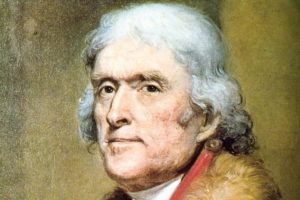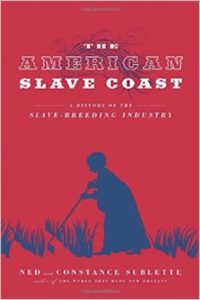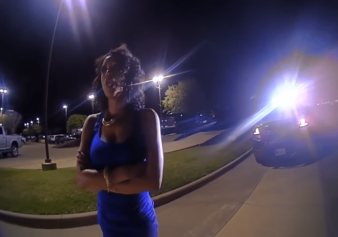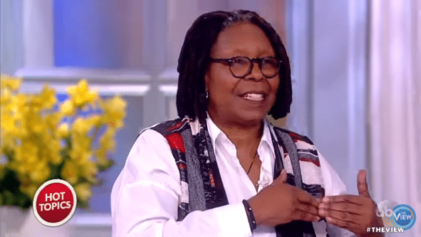
Former U.S. president Thomas Jefferson enslaved more than 600 Black people over his lifetime.
Former president Thomas Jefferson’s Monticello plantation is undergoing a $35-million renovation to demonstrate that enslaved lives matter. Monticello historian Christa Dierksheide described the makeover as an investment to ensure visitors to the historic site “understand that there was no place on this mountaintop that slavery wasn’t.” “Thomas Jefferson was surrounded by people, and the vast majority of those people were enslaved.” Although Jefferson held captive more than 600 Black people over his lifetime, their existence has mostly been concealed from visitors to this Virginia landmark.
Even Sally Hemings, the enslaved Black female who gave birth to six of Jefferson’s children, “wasn’t mentioned,” according to Dierksheide, “because [she] was viewed as something that could taint Jefferson’s reputation.” The Washington Post’s Krissah Thompson highlights the tackiness of the concealment: “The room where historians believe Sally Hemings slept was just steps away from Thomas Jefferson’s bedroom. But in 1941, the caretakers of Monticello turned it into a restroom.”
Incorporating Hemings’ experience is one of the primary objectives of the revamp. Thompson explains, “Monticello historians hope the restored room will humanize the image of Hemings beyond the gossipy old accounts of Jefferson’s so-called ‘concubine.’”
The Post and other media outlets employ a gambit of descriptors to define the tragic arrangement between Jefferson and Hemings that produced six offspring. Dierkshiede labels the pairing a “40-year relationship.” Others dub this a “long-term” affair or an “owner-slave relationship.”
No one calls it rape.
Robert Jensen, a white University of Texas at Austin professor and author of “The Heart of Whiteness,” reveals that he gets “the most hateful reaction from white people” when he declares that incontrovertible logic dictates that Thomas Jefferson raped Sally Hemings. “Any sexual contact between a slave and a master is essentially a case of rape,” Jensen notes this reasoning is generally accepted in an abstract manner, but this becomes intolerable “for some people to recognize when it’s applied to a specific white person.” Especially one of the country’s white Founding Fathers.
The indigestibility of calling the author of the Declaration of Independence a rapist motivates a fusillade of reactions. Jenson pinpoints how a number of whites will “talk about how he and Sally had a loving relationship and all of these attempts to gloss over the fact Thomas Jefferson owned her.” Plantation romances between white enslavers and shackled Black bodies are racist fabrications that camouflage the torture and suffering inflicted by the likes of Jefferson and other slave masters.
Speaking with Atlanta Black Star, Rev. Erica Evans Whitaker, a Louisville, Ky., pastor and local activist, categorizes narratives of an affectionate pairing between Jefferson and Hemings as “propaganda for the current environment we live in.” She couldn’t recall a single novel or film portraying a Nazi-Jewish romance with a World War II concentration camp as a backdrop, but could immediately think of dramatizations where Black people in bondage become smitten with their white “owners.”
The 2000 “historical drama” “Sally Hemings: American Scandal” provides a four-hour illustration. Writing for Variety, Laura Fries says the epic drama would have viewers believe the “Hemings-Jefferson relationship was, in fact, a love story for the ages.” The movie does not address the more than 25-year age difference between the two. Hemings was an adolescent teen when the overseer of Monticello began sexually exploiting his “property.”

“The American Slave Coast” emphasizes the forced breeding, sexual assault of enslaved Black females.
Ned and Constance Sublette’s “The American Slave Coast: A History of the Slave-Breeding Industry,” reminds us that Jefferson raped Hemings and, more broadly, stresses that, “To own a slave was to have a license for libertine behavior because sexual violation was intrinsic to slavery. The slaveowner had the full legal right to do with his property as he saw fit and sexual use was part of the portfolio of privileges.”
The Sublettes don’t just employ nifty financial metaphors. They quote Jefferson’s code for the successful fiscal operation of a plantation. The former president wrote: “I consider a woman who brings a child every two years as more profitable than the best man of the farm.” Meaning the taking and forced breeding of Sally Hemings — all enslaved Black females — was what Jefferson believed to be essential to sustaining a slave empire.
Thomas Jefferson is one of the four sculpted figures of Mount Rushmore National Memorial and the founder of the University of Virginia. To correctly brand his actions should mandate a re-valuation of his reputation — and of those who revere his words and deeds.


